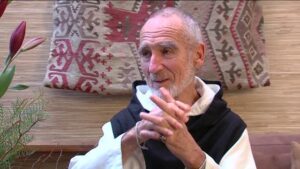As the newest addition to the team, I’ve been working hard to assist the Inner Strength Education team in teaching mindfulness to teens across Philadelphia. Last week was my first week in the classrooms where I was a co-teacher with more seasoned instructors. My experience as a yoga teacher for both adults, preschoolers, and teens, helped me to be confident about my ability to teach, but I was definitely nervous about my ability to navigate and facilitate a classroom in a public school setting.
The last experience I had in traditional classrooms was as a behavioral health worker in Philadelphia public schools. I worked with elementary school students who suffered from behavioral disorders such as oppositional defiant disorder (ODD), attention deficit hyperactivity disorder (ADHD), as well as forms of anxiety and psychosis. Because I am an instructor specific to the Strength and Stability aspect of Inner Strength, I feared I would struggle to get through to the students who may suffer from a combination of behavioral disorders, trauma, and other unforeseeable circumstances.
My fears were laid to rest this week as my lead instructors and I created a fun learning environment for the students. We facilitated creative activities through art and active listening exercises via team-based games. We invited critical thinking by inviting students to bring awareness to the sensation of breath work and the feeling of being aware of consciousness and thought. I was able to use my kind and gregarious nature to bring about courage in students to participate and share their thoughts and feelings on each activity.
One of my favorite moments was at George Washington High School where, during a meditation activity, I was able to speak to a student in Mandarin. There was a student who was always particularly quiet, choosing to silently observe in each class. We were completing a mini journal activity based on sensations experienced during our mediation exercise, when I noticed this student did not have anything written on his paper. I initially asked in English if he understood the directions, but decided to ask in Mandarin when the student replied with a nod and a slightly confused expression. I asked the student if they spoke any other language besides English and confirmed Mandarin after drawing similarities between the student’s name and my college Mandarin teacher’s name. I reintroduced myself to the student and repeated the instructions in Mandarin. His eyes widened in surprise and he began to ask me questions about where and how long I studied Mandarin. Later he shared his thoughts and emotions on meditation, to which he found difficult due to the volume of thoughts that passed through his mind.
I felt proud of the student for being courageous enough to share his struggles with meditation and proud of myself for being able to make him feel comfortable enough to do so. My lead instructor continued the class by going through common struggles during meditation, normalized those struggles, and informed the students that each person’s experience is different and there is no set way for meditation and wellness is supposed to feel. Some aspects of mindfulness feel better to us than others, and that was the message we wanted the students to learn. We wanted them to become aware enough in their minds and bodies, to work with us in finding the right mindfulness exercises for them.
There is so much I still have to learn about managing classrooms and being flexible enough to change course if something isn’t working for the students, and although there may be behavioral disorders, trauma, and unforeseeable circumstances the students and I may face, the fact that I am teaching mindfulness is one solution to that problem. With mindfulness, students can become aware and present in themselves enough to know what works for them and communicate their needs, wants, and concerns to those who can help them – whether that be myself, friends, or a student counselor. The first step however, is always awareness and a sense of objectivity of thought that Inner Strength seeks to cultivate. I am excited to help Inner Strength in this mission. Stay tuned as my journey progresses.



